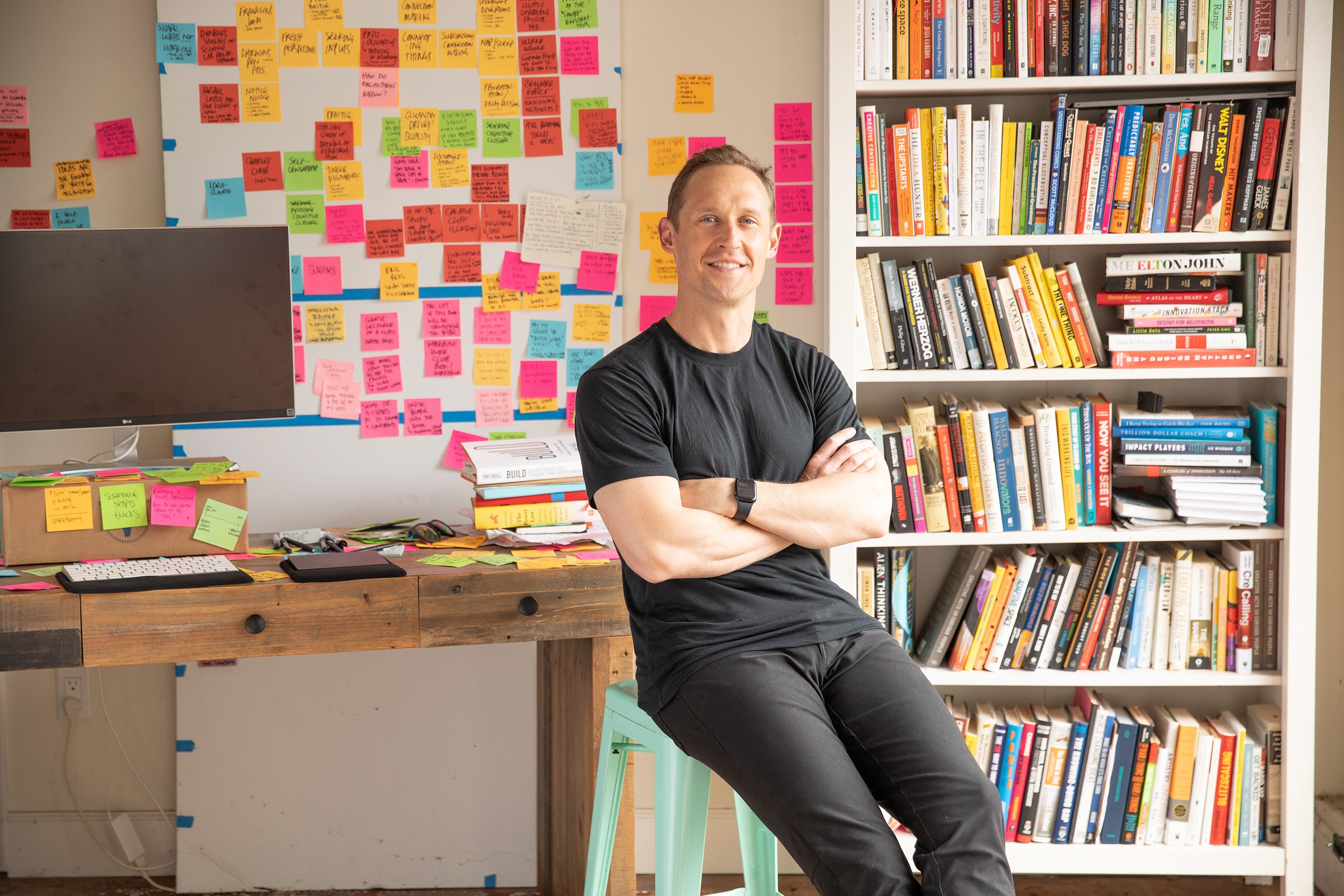
Methods of the Masters
A blog on the art & science of creative action.
Practice Process Mindfulness
One of the defining contributions the d.school is helping teams ask themselves, “What kind of thinking is appropriate, when?” We call such clarity being “Mindful of Process.” And it can seem like semantics until you realize we need to show up in different ways.
Question the Question
All too often, the stated “problem” keeps a team from innovation: the problem is the problem. Being willing to question the premise, rather than accept it blindly, is a critical practice for creative health.
Commit An Epiphany
Inside every single human being lies the potential to discover hence-unknown possibilities, to have an epiphany. My mission in life is to teach others the tools that turn that seemingly-magical moment into a methodical, repeatable reality.
Answer the Right Question First
Many individual innovators, and the vast majority of organizations, expend far too many resources answering the illusive question, “Can it even be done?” Instead, they should invest a fraction of the effort to answer a simpler, more important question first.
Design A Hypothesis
A good hypothesis is one of the most valuable assets in the scientific world. And they’re getting harder to come by. Luckily, this is where design thinking shines.
Wonder At What’s Inside
I’ll never forget the first time I caught a glimpse of my own dormant creative potential. It’s like a whole new world of possibility opened up to me. Ever since then, it’s a gift I’ve wanted to give others.
Practice Empathy
If you find a problem that matters, you’re well on your way to a desirable innovation. How do you do that? Practice empathy.
Create Desirability Data
Most organizations’ first question of a new idea is its technical specifications: can we even build it? The most important question is not technical, but human. A better question is, “Should we build it?…”
Design for Extreme Users
You might think the best place to start designing is smack dab in the middle of the bell curve. But it’s not. The history of innovation teaches that the best breakthroughs (even for the middle of the curve) come from the extremes.
Drive Innovation By Caring
Subconscious processing has tremendous potential to deliver breakthrough thinking. But you can only tap into that potential if you actually care about a problem.
Measure Your Ideaflow
After a dozen years teaching at Stanford’s d.school and consulting with the world’s top leaders, the most useful measure of creativity that Perry Klebahn and I have found is deceptively simple.
Immerse Yourself
We can inadvertently insulate ourselves from the very things that bother our customers. When we immerse ourselves in our own products and processes, we viscerally experience what needs to be reinvented.
Commission A Portfolio
We tell students at Stanford to create portfolios of early stage directions for a simple reason: it increases the likelihood of success. Research shows that we’re unlikely to select our highest-potential idea.
Search For Inspiration
Frustrated by what he considered to be inadequate design, Steve Jobs left his desk. He didn’t do it absent-mindedly, but deliberately, looking for something that would unlock the riddle.
Flex Your Idea Muscle
Spectacular entrepreneurs craft clever experiments. But a robust experimentation practice demands a rigorous ideation ritual. In Stanford’s LaunchPad, we tell aspiring founders to do this.
Form A Hypothesis
A good hypothesis is one of the most valuable assets in the scientific world, and they’re only getting more valuable. The question is, how to form them? This is where design thinking shines.
Talk To Other Humans
Talking to others is the surest way to find a problem that matters. And if you find a a problem that matters, you’re well on your way to a desirable innovation.
To Empathize, Allow Some Space
Bill Pacheco, gifted design thinking practitioner and instructor, sheds light on a critical element to building empathy: giving others the space to explore feelings they may not have explored before.
Drive Innovation Through Care
Subconscious processing has tremendous potential to deliver breakthrough thinking. But you can only tap into that potential if you actually care about a problem. Design thinking and empathy are a great way to foster that critical precursor to innovation.


















